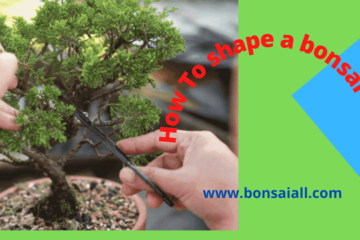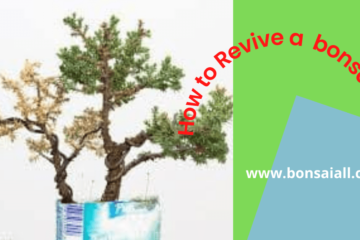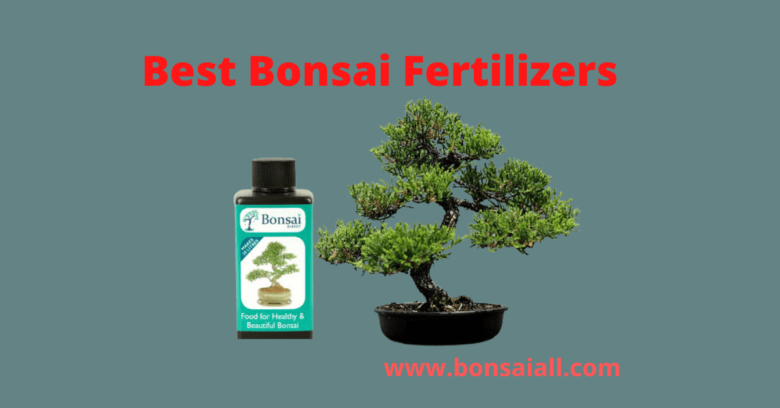Norway Spruce Bonsai is the most suitable tree species that requires a lot of sunlight, care and maintenance. But, after many sacrifices, when it blooms it looks majestic and sublime.
It is also very popular as a Christmas tree among bonsai lovers. If you live in the northern and eastern hemispheres, you can grow Norway spruce bonsai. But, proper knowledge of these plant species can make your bonsai growing journey easier.
Here, we would like to discuss each ins and outs of Norway spruce bonsai plants. Once you finish reading this article, you will get a proper guide on growing and caring for it.
Overview of Norway Spruce Bonsai
Content Overview
- Popular or scientific name – Picea Abies
- Family – Pinaceae
- Year of discovery – 16th century
- Invented – Europeans
- Country of origin – Scandinavia, United Kingdom
- Region – Boreal (Taiga)
- Growing climate – North temperate
- Take time to grow from seed – 10 to 14 days
- Time to Maturity – Minimum 5 years
- Tree length – 200 feet when mature
- Tree width – 15 to 20 feet
- Soil Requirement – Sandy loam or loose loam is best
- Pruning Required – Prune frequently
- Leaf Type – Needle-like leaves
- Preferred Temperature – 64-75°F during the day and 57-61°F at night
- That can not withstand – Frosty weather
- Display style – Christmas
- Growing season – Summer
- Flower color – Pink
- Growth rate – 2 to 3 inches per year
Types of Spruce Bonsai Plants
There are several types of spruce bonsai trees and some of them are very popular and grown in most regions. Let’s look at the most common and popular types of Norway spruce bonsai.
Picea Abies
Picea abies is mainly known as European spruce or Norway spruce Bonsai and grows in hardiness zones 2B to 7a. It is a native tree of Eastern, Central and Northern Europe. Its bark is reddish and brown and hangs downwards. However, its most prominent and longest cones are 9–17 cm long.
Picea abies bonsai has some subtype trees. such as
- P. Abies “Pumila Nigra”
- P. Abyss “Little Gem”
- P. Abyss “Konika”
- P. Abies “Variegata”
- P. abies “Echiniformis”
- P. Abies “nidiformis”
- P. Abies “Pumila”
- P. abies “Pygmaea”
Picea Glauca
Picea glauca is also called white spruce and its ideal growing area is the boreal forests of North America. This bonsai’s preferred growing zone is hardiness 2-5, but it cannot tolerate high heat.
The needles are up to 2 cm long and appear white, powdery and waxy bluish-green or green in color. Its cones will be light brown in appearance and 5-7 cm wide. Interestingly, it will live for about 250 to 350 years.
There are some subtypes of Picea glauca bonsai such as
- P. Gloca “albertiana conica”
- P. Gloca “Konika”
- P. Gloca “Densata”
Picea Glehnii
Picea glehnii is also known as Sakhalin spruce, Glehn’s spruce, Edo spruce, common Ezo spruce, and silver fir. It comes from the Pinaceae family and is widely cultivated in Japan. Peter von Glenn is the inventor of this plant, and the plant is named after him. But, in the United States, it is quite difficult to find bonsai of this species due to complicated export laws.
Picea Engelmannii
Some common names for Picea engelmannii are white spruce, silver spruce, blue Engelmann spruce, dwarf Alberta spruce, and mountain spruce. This species of spruce grows mainly in central British Columbia and western North America.
Its growing zone is hardy to zone 3, and it is an indoor plant with distinctive orange cones. You can identify this plant by observing the 1 inch fine and sharp branches and the same color in all directions.
Picea Jezoensis
Other common names for Picea Jezoensis are Ezo spruce, Jezo spruce, Yezo spruce, and dark-bark spruce. Naturally, it is a tall tree that can grow up to 30-50 meters tall with a 2-meter wide trunk. It prefers shady and hardy zone 5 to grow properly.
Picea mariana
Picea mariana of the pine family is also known as black spruce. It is commonly found in North America and 10 Canadian provinces, including 3 territories.
Cold weather is the best survival condition for this tree as it has waxy pine needles, layered branches and rough bark. These external features of the tree protect it from cold and predators. Hardy zones 4-7 are the best areas for growing this plant.
Picea Orientalis
Alternative names for Picea Orientalis are Caucasian spruce and Oriental spruce. It also belongs to the pine family and prefers hot and humid climates for growth. It can grow to 50+ feet tall when mature with short needles and unique purple cones. Hardy to zone 5 or full sun to partial shade is the best climate for growing it.
Picea Oungens
This plant is also known as Blue spruce, Colorado Blue spruce, Colorado spruce, White spruce, and green spruce. It is a North American native tree, and is hardy in its preferred growing zones 1-7. Naturally, it is found in New Mexico, Colorado, Arizona, Idaho, Utah, and Wyoming.
Norway Spruce Bonsai Tree Care Guidelines
Caring for Norway spruce Bonsai trees can be difficult, especially if you have no experience with this type of conifer. You have to make sure you have them in the right conditions; Otherwise, there is a good possibility that it may die.
Here is a detailed guidelines to caring for Norway Spruce bonsai.
Read More :How To care and Maintanance outdoor bonsai trees
Ideal Location and Sunlight
It is an indoor plant and needs a lot of sunlight during summer or its growing season. However, in winter, it needs partial sunlight and shade to protect it from frost. So it is better to keep it in the south facing window of your room, balcony or patio.
If the tree’s roots freeze due to extremely cold temperatures, it cannot transfer water to its evergreen leaves. So the roots will dry up without enough water.
If you need to hang artificial lights during the winter to help your Norway spruce bonsai plants survive,you can use artificial bonsai light for indoor bonsai tree in winter season.
Best Soil
Fortunately, one aspect that any Norway Spruce Bonsai tree is not too concerned about is the pH level. You can get away with neutral, alkaline or acidic content as long as it is organic. However, you should aim for a granular material to provide better stability in the first year.
You should also ensure adequate drainage. Roots do not like to lie in water or wet soil for long and this can cause many fungal diseases. When you pour water, you can test saturation by determining how quickly the liquid dissolves into the substrate.
Water and Humidity
While most bonsai benefit from daily watering in the spring and summer, the same cannot be said for Norway Spruce Bonsai. Of course, it still prefers to drink enough liquid, but in the right amount. Feel the top three inches of soil to see if it is dry before you refill. You’ll want less water in the winter.
Norway Spruce Bonsai prefers humidity throughout the year. Since it is an evergreen, you should also mist the leaves in winter to prevent them from drying out. The more moisture you diffuse into the surrounding air, the better.
Read More :How To Water a Bonsai tree indoor Ultimate Indoor Bonsai Watering Solution
Fertilizing
You will need a solid fertilizer in the spring when the new leaves grow. Make sure you feed it every two weeks so it has enough food. You’ll want to apply the same measure in the fall so it can store carbohydrates for the winter.
In summer, you can reduce it to once a month or stop it altogether. It should not be fed in winter, as it will sleep during this period. Feel free to spray a liquid iron or chelates solution on the leaves to encourage a rich green color.
Read More :The Ultimate Guide To Best Bonsai Tree Fertilizers
Potting and Repotting
When the Norway spruce Bonsai tree is young, you should transplant it every two years. Because the roots form large balls, you’ll want a slightly deeper pot than bonsai standards. Narrow ones won’t cut it and you have to be careful when trimming finer hair at the roots.
When it is more mature, you can replace it every four to five years. The older it gets, the less vigorous the roots. You can repot your Norway spruce bonsai in late fall or early spring before you see new life appear in the leaves.
Read More :How to Repot a Bonsai for Beginners Complete Solutions
Shaping and Trimming
Mid-spring is the ideal time to do some light pinching to control new growth. Never remove all the needles on a branch, as the Norway spruce Bonsai tree will be reluctant to grow new ones on it. Remember to keep as much of the swirl pattern as possible without ruining the design.
You can wire and shape in late spring when growth slows and you are less likely to cause serious damage. This season is a good time to do some heavy pruning if you want to cut back large branches.
Read More :The Ultimate Guides How to Trim a Japanese Maple
Methods of Propagation
There are two effective propagation methods for any species of Norway Spruce Bonsai species. When it comes to seeds, you need to give them a cold pre-treatment that simulates winter dormancy. You can collect Norway Spruce Bonsai tree seeds in fall and winter and plant them in early spring.
You can also use cuttings you take in late fall or early spring. However, these are more challenging. It can take up to two years for roots to appear, and you can tell the cuttings are doing well because of the green leaves. However, if you don’t see any roots by the third year, chances are it won’t develop at all.
Pests and Diseases
You have seen how many pests and diseases can attack Norway spruce bonsai. While we don’t want to scare you, we do want to alert you to some Pests and Diseases owners of these trees face.
Northern climates:
If you live in the northern hemisphere, you may have to deal with spruce budworm. These yellow-brown caterpillars begin as larvae that live in buds and developing young needles. You can easily remove them by hand when you find them.
Needle scales:
Some needles are long, white scales that slowly feed on leaves. They won’t cause much damage in isolation, but you should be careful not to overpopulate your plants. It is best to get rid of them at the first sight.
Cytospora Canker:
These borers target lower branches before moving up. When it infects one of your branches, it will eventually kill it. You will notice that the leaves turn from green to brown before they fall to the ground. You have to cut the entire branch.
Needle Cast:
There are different types of needle cast. One leaf turns yellow before dying, while the other targets the lower branches as it spreads further up.
Rust Diseases:
Numerous rust diseases can attack Norway spruce Bonsai trees, causing the needles to turn yellow before dying.
Exciting Facts
The Bonsai Alchemist is about to sign off, but we have one more aspect to share with you There are some interesting facts about this genus that make it stand out among other bonsai:
- The Royal Botanic Gardens has a plant list indicating 59 official spruce names;
- Few seedlings survive the first season and year because they are susceptible to damage from many sources;
- When the Wright brothers built their first airplane, they used spruce as wood;
- Whitewood and North American lumber are popular building materials in the United States, also made from these trees;
The largest spruce tree is at Lake Quinault, believed to be over 1000 years old. It measures up to 191 feet tall with a girth of 58 feet and a diameter of 18 feet.
Growth Patterns
One aspect that makes Norway Spruce Bonsai so beautiful to behold is the swirling pattern of needle leaves. They develop rapidly in the spring while settling in the summer and going completely dormant in the winter. You need to pinch in the right places to control the size and shape of your stunning miniature plants.
The needles are shorter than those of pine trees and they are usually borne singly. If you look closely, the needles look diamond-shaped or four-sided. Norway spruce bonsai flowers are cones, and you will find male and female cones on the same spruce tree.
Recommended style
Many styles are popular for Norway Spruce Bonsai species. You may find some spruce trees with roots-over-rock, cascading or even windswept. Forest and diagonal are also popular bonsai styles. You can play with different ideas and you can also find a unique design.
The only problem is with whorl needles and branches. Because they represent such a complex form, you’ll struggle with formal and informal straight shapes. You have to decide which branches to keep and which to remove, and creating something beautiful with any of these styles can be challenging.
Things to Consider for Growing an Indoor Norway Spruce Bonsai
Now that you’ve seen which Norway spruce bonsai are available, there are a few things you need to consider before buying one. Growing one of these plants isn’t as simple as keeping it in your house and watering it every day. They require a little special care and attention.
Finding the Right Species
Although all species are part of the same genus, this does not mean that they all have the same requirements. If you read the list of spruce trees selected above, you will notice that some of them prefer some shade to full sunlight. Make sure you know which species you are buying so you can research proper care details.
Read More:The 12 Best Indoor Bonsai Tree Types:How To Care Indoor Bonsai Trees
Specialized Wiring
The swirls of needles make these bonsai trees exceptionally challenging to wire. Although a thinner material will prevent excessive damage to the leaves, you still need to take extra care not to tear the leaves. Work through them carefully and delete some nodes if you need to.
Read More : How To Wire a Bonsai Tree? The Complete Guide To Make Your Bonsai Aesthetic
Don’t Prune Too Far Back
Branches do not like to be without needles. That being said, don’t cut the branch all the way to the trunk or supporting stem. It is better to leave a small stump at the end, so it does not affect the adjacent structure.
Buy suitable Pots
We know that most bonsai enthusiasts aim for narrow, tall pots to adhere to the classic style. However, spruce trees produce root balls, which do not produce narrow product concepts. You should aim for something deeper so that the roots have enough room to form and breathe in the soil.
Read More :The Ultimate Guides How to Make Bonsai pots from Clay?
Where To Buy Norway Spruce Bonsai?
You can find the Norway spruce bonsai tree at your nearest nursery. But, if you don’t go there, the best online site Amazon can be your best option to buy Norway Spruce bonsai tree.
FAQ
Is spruce good for bonsai?
The spruce tree is undoubtedly one of the most desirable trees to grow in bonsai. Many species grow as tall as 300 feet in the wild, but they are relatively easy to find in miniature. They are prized for their shiny needles with different hues.
How do you root a blue spruce tree?
If you want to grow one from a cutting, trim the stem at an angle and place the top third of the needle. After applying rooting hormone to the lower end you can place the stem in loamy soil. You need to keep the substrate moist while waiting for new roots.
Do blue spruce have pine cones?
While spruce is within the pine family, they do not form part of the same genus or species. Calling their fruit pine cones is a misnomer, as they are technically spruce cones.
Can you air-layer a spruce tree?
Although cuttings give good results, some spruce bonsai species do well with air layers. Roots will form while the branch is attached to the plant, after which you can remove it and plant it in new soil.
Can you keep a blue spruce short?
Yes, you absolutely can! With careful pruning, you should maintain the traditional cone shape without pruning all the way through. You may see branches die or other leaves drop off.
Can you bonsai a royal poinciana tree?
Yes, you can bonsai a royal poinciana tree because of its characteristic topography. This evergreen plant grows rapidly with fern-like foliage and requires poor soil and hard pruning for cultivation. You can bring out the natural umbrella shape of this plant with a little care and maintenance.
Can you keep a royal poinciana short?
Yes, you can keep a regal poinciana short by regular pruning and pruning. The small royal poinciana plant will look stunning and eye-catching with its bright flowers. If you take proper care and prune the tree, you can easily maintain a few meters to grow it in a small space.
How long does it take to grow a royal poinciana?
Generally, most royal poincianas take a minimum of 5 years to flower. However, some royal poinciana plants will take 12 or more years to flower. So bonsai experts recommend buying a plant that already has flowers to cut down on your wait time.
Conclusion
Finally on to the last few words on Norway Spruce Bonsai. This species of bonsai needs full sunlight, proper watering and pruning to survive for a long time. Umbrella shaped Norway spruce bonsai can enhance the beauty of your home. So choose the right species of spruce bonsai, take care of it and enjoy your gardening.



